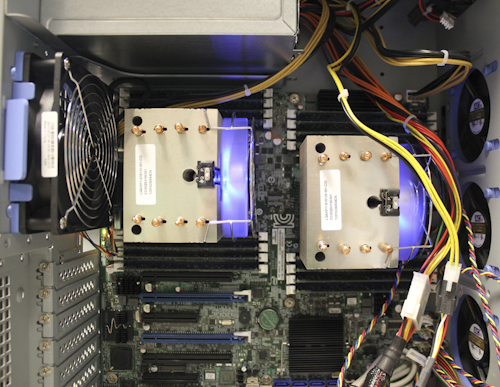TEST SETUP AND METHODOLOGY
 In testing the SanDisk Optimus Eco, along with all enterprise drives, we focus on long term stability. In doing so, we stress products not only to their maximum rates, but also with workloads suited to enterprise environments.
In testing the SanDisk Optimus Eco, along with all enterprise drives, we focus on long term stability. In doing so, we stress products not only to their maximum rates, but also with workloads suited to enterprise environments.
We use many off-the-shelf tests to determine performance, but we also have specialized tests to explore specific behaviors we encounter. With enterprise drives, you will see that we do not focus on many consumer level use-cases.
Our hope is that we present tangible results that provide relevant information to the buying public.
LATENCY
To specifically measure latency, we use a series of 512b, 4K, and 8K measurements. At each block size, latency is measured for 100% read, 65% read/35% write, and 100% write/0% read mixes.
The Optimus Eco performed well in our average latency tests. It didn’t seem to like 512B transfer sizes all that much, where it performed worse than at 4KB when writes were involved.
We’re not really sure what to think about the maximum latency results, they were kind of all over the map. None of the results were worrisome, there was just no pattern to the values, like we are use to seeing. Either way, they results were quite a bit lower than the latency results we got from the CloudSpeed 1000E, which hovered around 60ms.
ADVANCED WRITE TESTING
As we talked about in our Micron P400m SSD Review, SSDs have different performance states. Since the SanDisk Optimus Eco is an enterprise SSD, we will focus on steady state performance.
With the following tests, we stressed the drive using random 4KB write workloads across the entire span for at least 24 hours. This is more than enough to achieve steady state. The following graph is showing the latency and IOPS across an 11 hour span.
Each point is a 1 minute average, which should give us a good idea how the drive is performing. The Optimus Eco delivered excellent performance, averaging 35k IOPS.
When we took a look at the last hour of the test, showing 1 second averages, the results were just as impressive. The tight grouping of data is exactly what we want to see out of an enterprise drive. There were no outliers at any point during our tests, just solid, consistent performance. We have always liked this about the Optimus series of SSDs.
 The SSD Review The Worlds Dedicated SSD Education and Review Resource |
The SSD Review The Worlds Dedicated SSD Education and Review Resource | 
